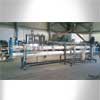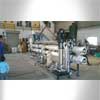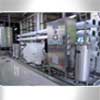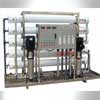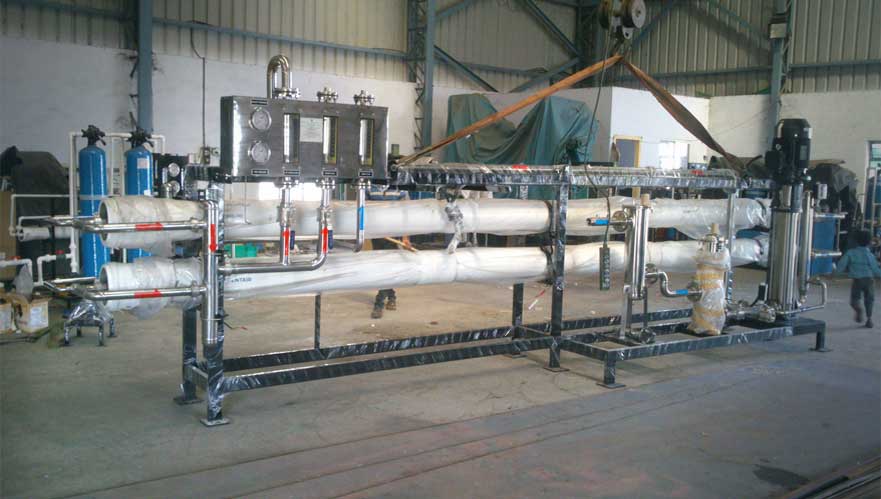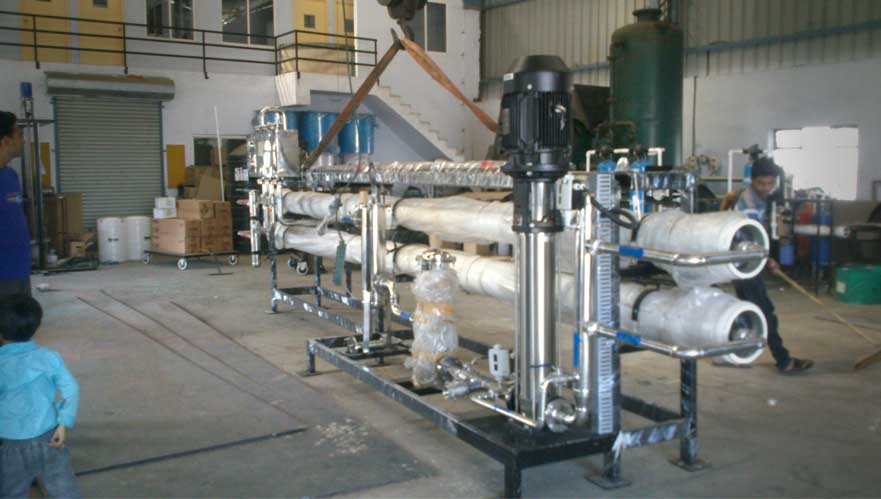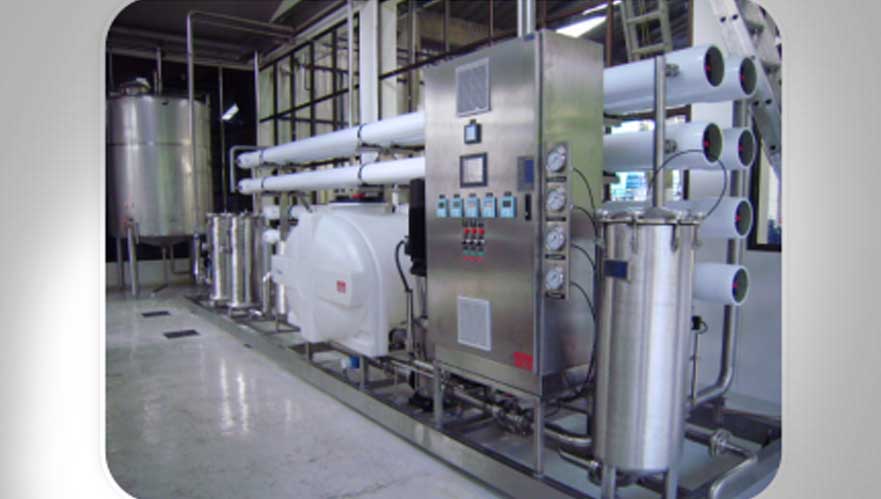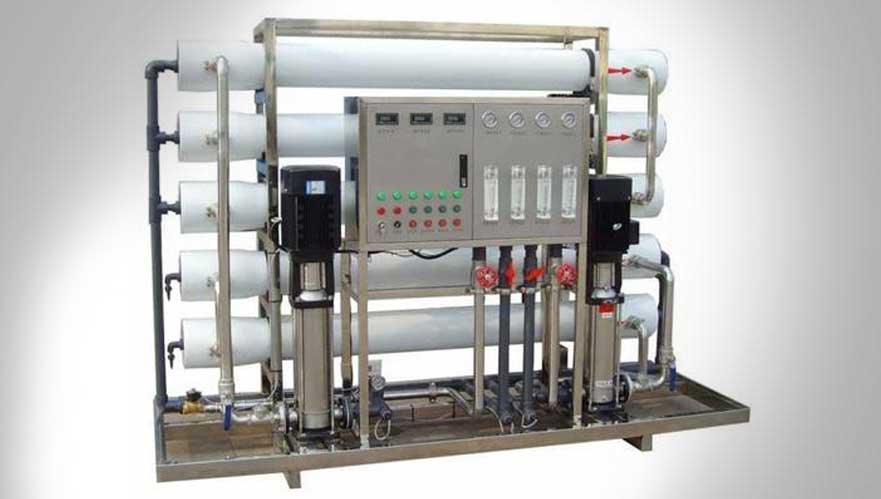Nanofiltration (NF) is a relatively recent membrane filtration process used most often with low total dissolved solids water such as surface water and fresh groundwater, with the purpose of softening (polyvalent cation removal) and removal of disinfection by-product precursors such as natural organic matter and synthetic organic matter.
Nanofiltration is also becoming more widely used in food processing applications such as dairy, for simultaneous concentration and partial (monovalent ion) demineralisation.
Nanofiltration is a membrane filtration-based method that uses nanometer sized through-pores that pass through the membrane. Nanofiltration membranes have pore sizes from 1-10 nanometers, smaller than that used in microfiltration and ultrafiltration, but just larger than that in reverse osmosis. Membranes used are predominantly created from polymer thin films.[1] Materials that are commonly used include polyethylene terephthalate or metals such as aluminum.[4] Pore dimensions are controlled by pH, temperature and time during development with pore densities ranging from 1 to 106 pores per cm2. Membranes made from polyethylene terephthalate and other similar materials, are referred to as “track-etch” membranes, named after the way the pores on the membranes are made.[5] “Tracking” involves bombarding the polymer thin film with high energy particles. This results in making tracks that are chemically developed into the membrane, or “etched” into the membrane, which are the pores. Membranes created from metal such as alumina membranes, are made by electrochemically growing a thin layer of aluminum oxide from aluminum metal in an acidic medium.
Nanofiltration is a membrane filtration-based method that uses nanometer sized through-pores that pass through the membrane. Nanofiltration membranes have pore sizes from 1-10 nanometers, smaller than that used in microfiltration and ultrafiltration, but just larger than that in reverse osmosis.
Membranes used are predominantly created from polymer thin films. Materials that are commonly used include polyethylene terephthalate or metals such as aluminum. Pore dimensions are controlled by pH, temperature and time during development with pore densities ranging from 1 to 106 pores per cm2.
Membranes made from polyethylene terephthalate and other similar materials, are referred to as “track-etch” membranes, named after the way the pores on the membranes are made. “Tracking” involves bombarding the polymer thin film with high energy particles. This results in making tracks that are chemically developed into the membrane, or “etched” into the membrane, which are the pores. Membranes created from metal such as alumina membranes, are made by electrochemically growing a thin layer of aluminum oxide from aluminum metal in an acidic medium.
Nanofiltration is sometimes used to recycle wastewater, as it offers higher flux rates and uses less energy than a reverse osmosis system.The design and operation of nanofiltration is very similar to that of reverse osmosis, with some differences. The major difference is that the nano membrane is not as "tight" as the reverse osmosis membrane. It operates at a lower feedwater pressure and it does not remove monovalent (i.e., those with a single charge or valence of one) ions from the water as effectively as the RO membrane.
- The Epitome of Environmental Engineering
- 401-403, Phoenix Avenue,
- Opp.BRG Heritage, Sama-Savli Road, vemali, vadodara
- +91-9824018522
- info@btwatertreatment.com


